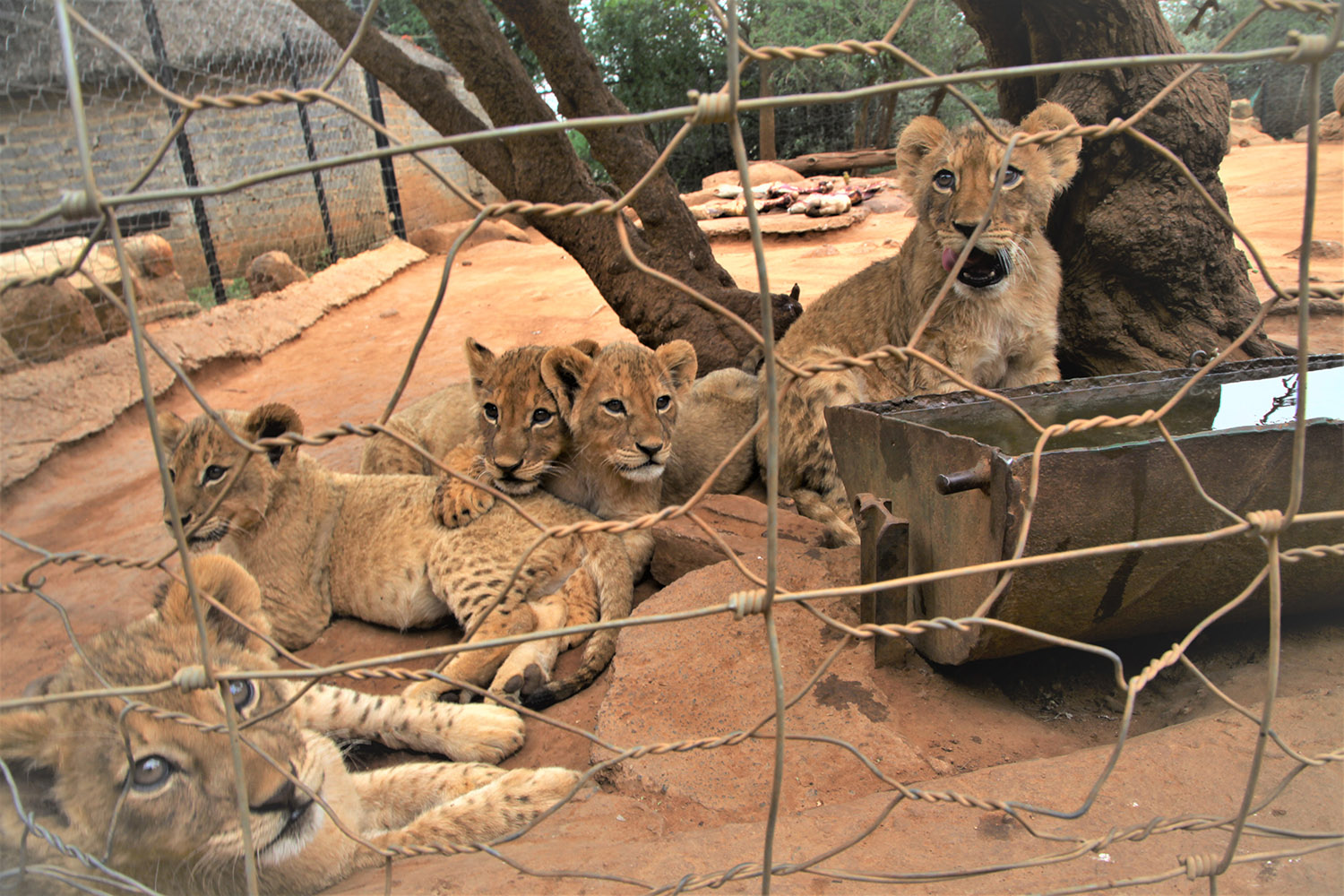The exploitation of big cats in South Africa continues to grow and includes not only indigenous species such as lions and leopards, but also exotic species like tigers and jaguars.
The demand for big cats has meant they are now intensively bred and commercially traded in vast numbers across the globe:
- Legally: the commercial trade means they can be bred in captivity and exploited for profit (for interactions, kept as pets, trophy hunting or for entertainment)
- Illegally: South Africa is contributing to an illegal trade by supplying live animals to breeding farms in Asia and trading parts for traditional medicines
Due to direct human influence, four out of the five big cat species (lions, tigers, leopards, and jaguars) are facing unprecedented issues that are not only an animal welfare crisis but are also contributing to the decline of the species in the wild. We need to stop this.
Key statistics on the big cat trade in South Africa:
- There are over 300 big cat breeding farms across South Africa
- It is estimated there are 10,000-12,000 lions kept in captivity across the country
- Females are forced to produce 2-3 litters per year, many more than they would in the wild
- Separated at birth from their mothers, cubs are used for petting, photos, and trophy hunting
- Lion cubs may be sold to other breeders, with prices ranging between A$700 - $1500. The cost of a tiger cub is between A$1200 - $2400.
- Once they are too big to interact with humans, live big cats and their parts are frequently sold to Asian markets for use in traditional medicine or for luxury items
We are campaigning to stop the farming of all big cats and to ban all commercial trade of big cats and their body parts from, within and to South Africa, but we need your help. Please add your name to our petition now!
All big cats need protection
South Africa has recently announced its plans to immediately halt the domestication and exploitation of lions, and close captive lion facilities. While this is a positive step from Environment Minister Barbara Creecy, it is not enough. There are other big cat species in South Africa, native and exotic, that are being exploited and whose populations are at risk across the globe. All big cat trade is connected. FOUR PAWS will be closely monitoring South Africa’s Environment Ministry legislative process in the coming years and advocate to include all big cat species in the new policy.
A growing industry exploiting the world’s most iconic wild animals
The exploitation of big cats in South Africa continues to grow and includes not only indigenous species such as lions and leopards, but also exotic species like tigers and jaguars. It’s estimated that 12,000 lions are being intensively farmed in captive facilities across South Africa. For tigers, no one really knows how many are currently kept. The South African authorities were unable to tell us following a series of PAIA (Freedom of Information) requests, but there are South African NGOs estimating up to 1,500 tigers. The demand for big cats has meant they are now intensively bred and commercially traded in vast numbers across the globe:
• Legally: the commercial trade means they can be bred in captivity and exploited for profit (for interactions, kept as pets, trophy hunting or for entertainment)
• Illegally: South Africa is contributing to an illegal trade by supplying live animals to breeding farms in Asia and trading parts for traditional medicines
South Africa’s role in the global big cat trade
South Africa is farming numerous big cat species for the commercial international trade and is one of the biggest exporters of big cats and their parts to Asia. The illegal wildlife trade is the fourth largest criminal activity in the world, and it is being fuelled by the trade in big cat products from South Africa. This is driving consumer demand, largely from Asia, for their parts.
Business in the age of mass extinction.
All 5 big cat species (lion, tiger, leopard, jaguar and snow leopard) are threatened by unprecedented human influence, including trade, habitat loss and wildlife conflict. This is leading to the rapid decline in big cats and contributing to a global biodiversity crisis.

